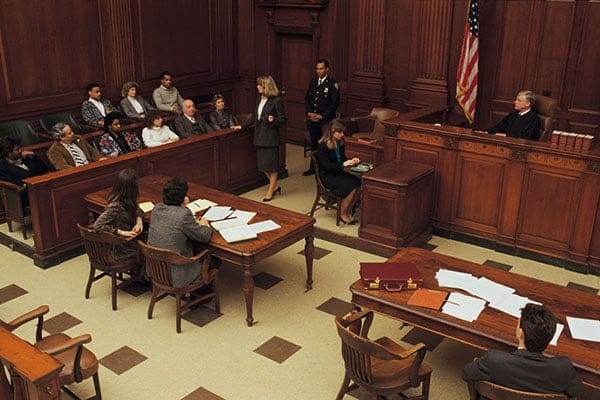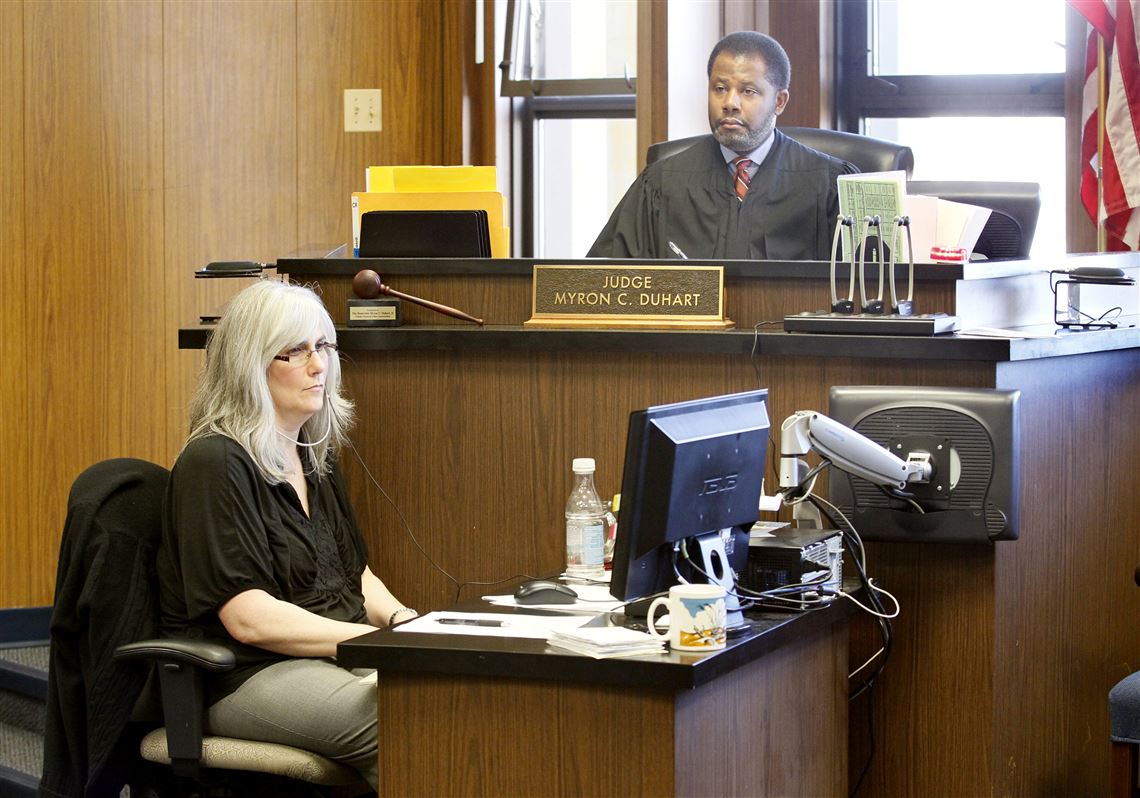The role of durham court reporting in appeals
Just How Court Reporting Works: A Step-by-Step Guide to the Legal Process
Court reporting is a vital element of the lawful system. It entails a structured procedure that ensures exact documentation of proceedings. From preparation to the last distribution of transcripts, each step is essential. Understanding how court press reporters run deals insight right into the stability of legal records. The nuances of their work can greatly influence lawful end results, triggering concerns concerning the techniques and innovations they use. What are the specific methods that specify this occupation?
The Role of Court Reporters in the Legal System
Stenotype reporter play a crucial duty in the lawful system by giving trustworthy and precise records of court process. Their job guarantees that every talked word during tests, hearings, and depositions is documented, which is vital for keeping a main record of events. This transcription is basic for appeals, as it enables greater courts to examine the process and figure out if any kind of mistakes were made throughout the trial.
In addition, court reporters aid in preserving the integrity of the legal procedure by developing verbatim documents that can be described by legal representatives, judges, and various other parties associated with a situation. They frequently make use of specific equipment and software to catch discussion with precision. Beyond the court room, their records can serve as important historic papers, supplying understanding into judicial process and the lawful system's performance. Eventually, stenotype reporter contribute substantially to transparency and liability in lawful matters.
Preparing for a Court Reporting Session
Prep work is crucial for a successful court reporting session, as it ensures the precision and efficiency of the transcription procedure. Stenotype reporter begin by assessing case materials, including pleadings and witness listings, to familiarize themselves with the terminology and context. They also make certain that they have the necessary devices, such as steno makers, note pads, and back-up devices, prepared for usage.
Prior to the session, communication with lawful teams is crucial. Press reporters typically clear up any specific demands concerning formatting or preferred terms. Additionally, they may set up to consult with witnesses or lawyers to talk about the process and validate the schedule. Arriving early to establish the equipment permits fixing possible technical issues. Overall, detailed preparation not just boosts the press reporter's confidence however also adds greatly to creating a clear and precise document of the lawful procedures.

Capturing the Record: Techniques and Equipment
Making use of advanced strategies and reputable devices, stenotype reporter diligently record the talked word during legal proceedings. They utilize stenography, a technique involving a specialized maker that allows them to type several audios concurrently, consequently transcribing discussion in genuine time. This machine, referred to as a steno key-board, is equipped with secrets that represent syllables and words, making it possible for swift and accurate input.
In addition to stenography, court press reporters may utilize audio recording tools as extra devices. These devices work as backups, making certain that no crucial details is lost during procedures. Some press reporters integrate software application that boosts their transcription performance, supplying attributes such as voice recognition and automated formatting.
Appropriate positioning and focus are critical; reporters must preserve focus on all speakers, catching subtleties and inflections that add to the record. Via a combination of ability and technology, stenotype reporter maintain the integrity of the legal process by guaranteeing a detailed and exact record of occasions.
Recording the Process
Transcribing the process requires court press reporters to convert spoken discussion right into created message with phenomenal precision and rate. This procedure normally occurs quickly after the recording has been recorded, using specialized software application that allows for seamless transcription. Stenotype reporter must listen diligently to the sound, Click Here making certain that every inflection, word, and pause is properly stood for in the records.
They commonly depend on shorthand systems, individual transcription skills, and advanced modern technology to promote this job. The setting in which they work can be fast-paced and often disorderly, as legal proceedings commonly include several speakers and technical lingo. Stenotype reporter have to likewise keep concentration you could look here to record subtleties in tone and context that might be essential for the legal record. Inevitably, the accuracy of the transcription is critical, as it acts as a certification for future reference in lawful proceedings.
Examining and Editing the Records
The process of evaluating and editing and enhancing the transcript is vital for making certain accuracy in court reporting. Stenotype reporter commonly collaborate with lawyers to clarify any ambiguities and verify the accuracy of the videotaped statements. This partnership is necessary for preserving the integrity of the legal record.
Value of Accuracy
Accuracy acts as the foundation of effective court reporting, as also minor mistakes can greatly alter the significance of legal process. The examining and editing procedure is critical in making certain that transcripts mirror the spoken word with fidelity. Court press reporters diligently confirm names, technological terms, and legal lingo to maintain accuracy. This attention to detail assists avoid misconceptions that could impact situation results. Precision fosters trust fund amongst legal specialists, clients, and the court, strengthening the honesty of the judicial system. Mistakes can cause appeals or conflicts, making it important for reporters to fine-tune their work thoroughly. Inevitably, the search of accuracy not just boosts the integrity of the records however likewise maintains the criteria of the lawful occupation.
Cooperation With Lawyers
Cooperation between stenotype reporter and lawyers is important during the reviewing and editing phase of transcript production. This procedure assures that the last paper properly reflects the spoken word and sticks to lawful requirements. Lawyers usually evaluate records for certain terminology, context, and any type of potential mistakes that could influence the instance. Stenotype reporter count on attorneys' experience to clarify unclear areas or emphasize critical declarations. Efficient communication is vital; lawyers might supply feedback or demand adjustments, which stenotype reporter should resolve promptly. This partnership not just boosts the high quality of the records but also adds to a smoother lawful procedure. Ultimately, joint initiatives bring about a specific and trustworthy document, vital for legal process and future recommendations.
Delivering the Final Transcript to Clients
Upon completion of the transcription process, court press reporters thoroughly prepare the last file for distribution to their customers. This final transcript goes through complete checking to guarantee precision, as any errors could considerably affect lawful procedures. Court press reporters format the file according to the details needs stated by the customers or legal firms, including pagination, indexing, and any kind of required exhibitions.

Lastly, court reporters might give a cover letter summarizing vital information and supplying more assistance if required. This detailed approach guarantees that customers get a polished, precise, and quickly navigable records, necessary for their lawful needs.
Often Asked Questions
What Certifications Are Needed to End Up Being a Court Press Reporter?
To end up being a stenotype reporter, individuals usually require a senior high school diploma, completion of a court reporting program, and accreditation or licensure, depending on state demands. durham court reporting. Proficiency in shorthand and innovation is additionally necessary for success
Exactly how Long Does It Take to Full Court Reporting Training?
Generally, finishing court reporting training takes between 18 months to 4 years, depending on the program's strength, the pupil's pace, and the specific demands of the jurisdiction in which they desire to practice.

What Is the Average Income of a Stenotype Reporter?
The ordinary wage of a court reporter varies by place and experience, generally ranging from $45,000 to $100,000 yearly (durham court reporting). Factors such as specialization and need can significantly affect their earnings in various areas
Are Court Reporters Required to Have Certification?
Stenotype reporter are generally required to obtain accreditation, which guarantees they possess the essential abilities and expertise for exact transcription. Qualification demands can vary by state or jurisdiction, mirroring specialist standards within the lawful area.
Can Court Reporters Job From Another Location or Freelance?
Stenotype reporter can work remotely or freelance, supplying flexibility in their occupation. Several use modern technology to record Learn More Here process from various places, allowing for diverse chances in the legal field while maintaining a work-life balance.
Court press reporters play an important duty in the lawful system by providing exact and dependable transcripts of court proceedings. Additionally, court press reporters aid in protecting the stability of the legal process by developing verbatim records that can be referred to by lawyers, judges, and various other events entailed in an instance. Using sophisticated techniques and trustworthy tools, court reporters carefully catch the spoken word during legal procedures. Court press reporters should also preserve concentration to record subtleties in tone and context that may be essential for the lawful document. To become a court press reporter, people commonly require a high school diploma, completion of a court reporting program, and qualification or licensure, depending on state needs.